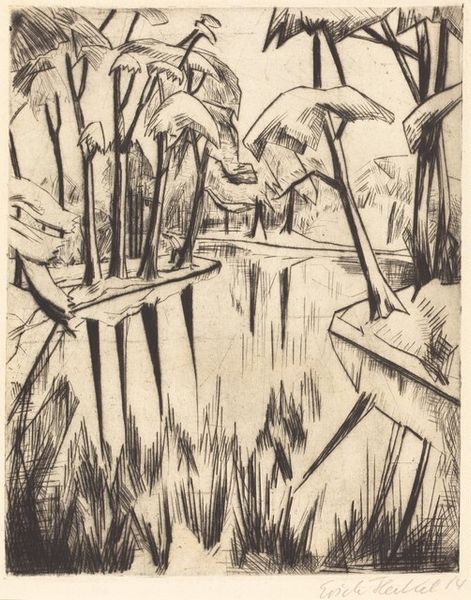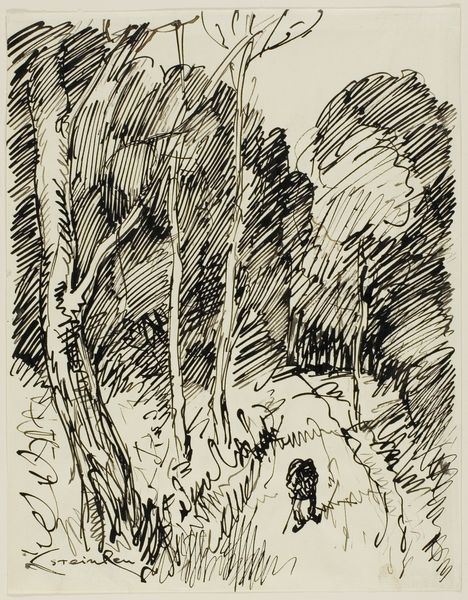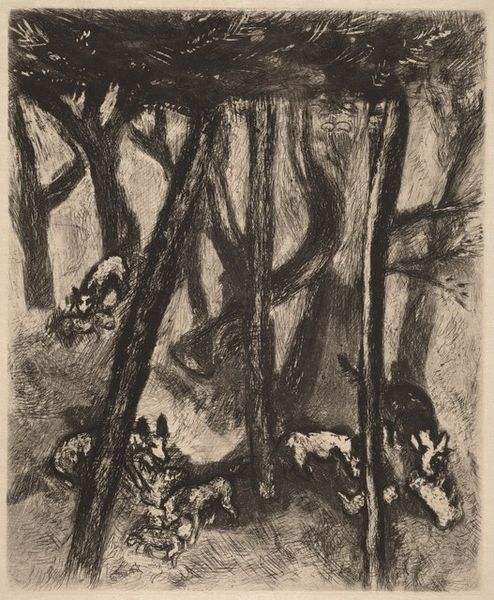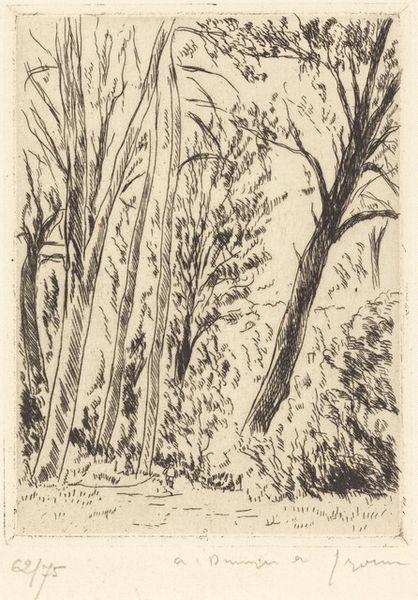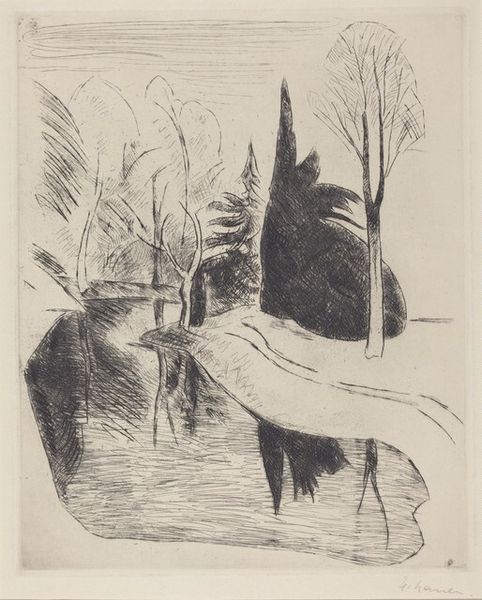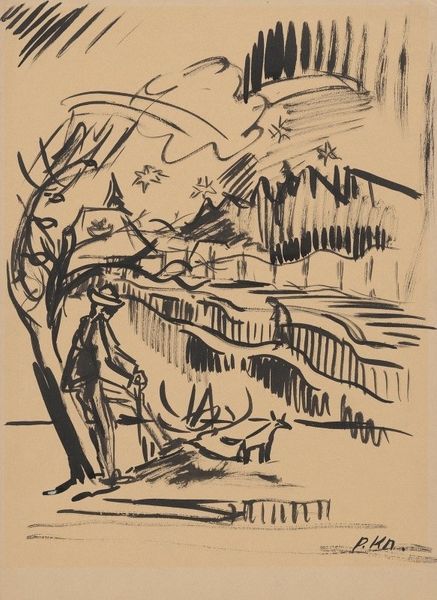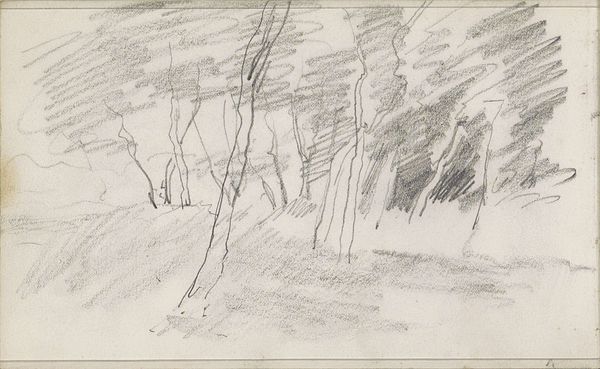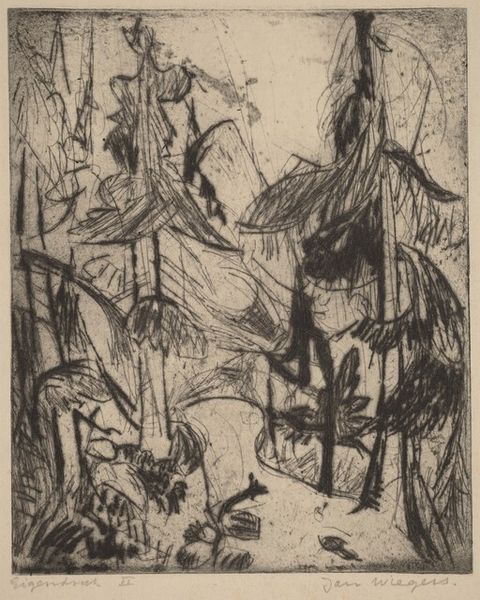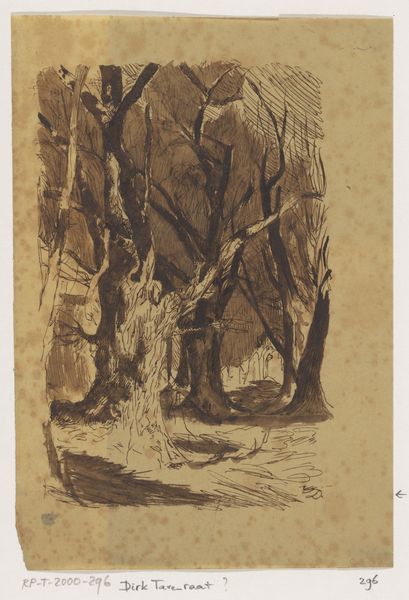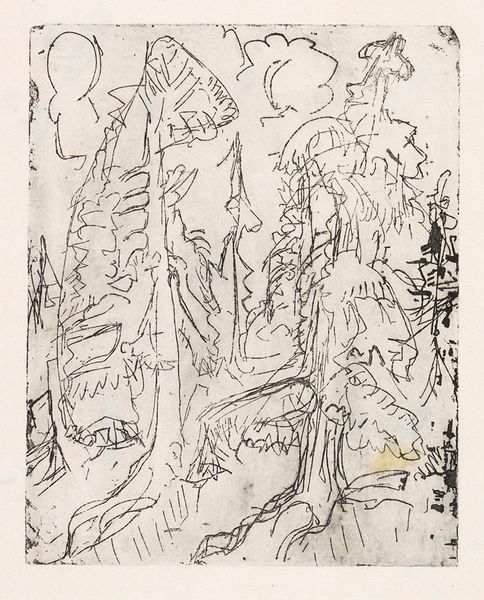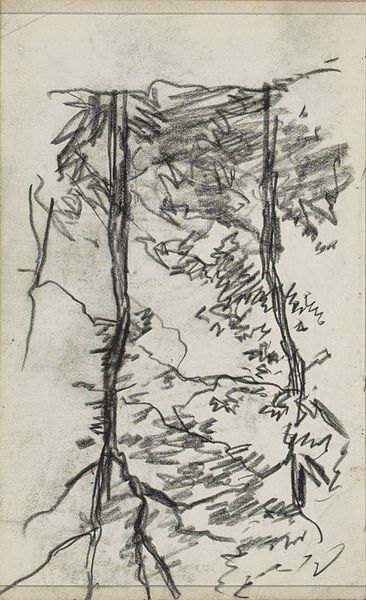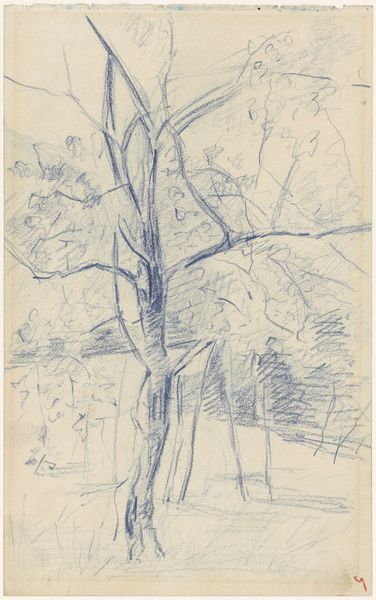
drawing, ink, woodcut
#
drawing
#
ink drawing
#
landscape
#
ink line art
#
ink
#
linocut print
#
ink drawing experimentation
#
pen-ink sketch
#
expressionism
#
woodcut
#
abstraction
#
line
Dimensions: sheet: 73.66 × 53.34 cm (29 × 21 in.)
Copyright: National Gallery of Art: CC0 1.0
Editor: This is Marsden Hartley’s "Millstone in the Woods," created around the 1920s. It's an ink drawing with such strong lines. I find the contrast between the rough, almost violent strokes in the trees and the smooth curve of the millstone really striking. What’s your take on this piece? Curator: It's a potent image, isn't it? Considering Hartley’s broader oeuvre, particularly his grappling with American identity in the early 20th century, I see this drawing as deeply rooted in that discourse. We see the abandoned millstone as a symbol of a bygone era, overtaken by the imposing, abstracted woods. What do you think that contrast represents in relation to the period it was created in? Editor: Maybe it’s about the industrial age encroaching on nature? Or the struggles of rural communities? I can't tell if Hartley’s celebrating nature's resilience or mourning a lost way of life. Curator: Precisely! It speaks to the anxieties and ambivalences that permeated American society at the time. The millstone, rendered useless in this natural setting, hints at a critique of industrial progress and its impact on rural traditions and landscape. Does knowing this social context impact how you understand this particular millstone? Editor: It really does. I hadn't considered the social commentary, but seeing the millstone as a symbol of change, maybe even loss, adds a new layer of meaning. Thanks! Curator: And thank you. Considering the artwork through a political lens shows how societal changes are absorbed and echoed within the world of art.
Comments
No comments
Be the first to comment and join the conversation on the ultimate creative platform.
